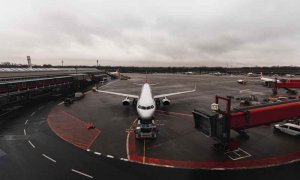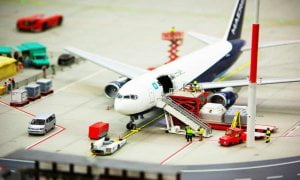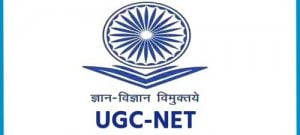Concept of E-Business
Electronic interactions between consumers and businesses explain what e-business is all about. These electronic interactions are done using new technological applications such as World Wide Web, interactive televisions, e-payment gateways, mobile phones etc. The interactions may lead to either an offline purchase or an online transaction leading to purchase of goods and services of their choice.
E-business is about realizing the ever expanding opportunities of electronic connectivity both externally, through internet, and internally, through intranets. It involves use of a spread of tools to get , manage, search, analyse, publish and communicate the varied sorts of information.
Also read Pillars of sustainability
Definition of e-Business
The concept of e-business has been defined as ‘the business, which uses information technology infrastructure to increase business efficiency and provide a basis for new products and services’ (Kirvaitis, 2001); ‘Information, products and services purchasing and selling through computer networks’ (Kalkota, Whinston, 1996; Koronios, Xu, 2005) and E-business is application of digital technology particularly internet technologies to improve organization’s competitiveness through continuous optimization (Chaffey, 2015; Turban et al., 2012, Strauss and Frost, 2014).
Internal and External Dimensions
E-business dimensions of an organisation are of internal and external. These dimensions determine the transformation of the entire functioning of an organisation equipped to handle business electronically.
Read more on Factors Affecting Carrying Capacity of Destination
Internal dimensions refer to use of those common systems which enable an organisation to function in a fully integrated internal environment. This transformation can be established through a network of systems for internal and external communication, work on common set of tools, protocols and standards, sharing of consumer and product data as a common resource and enhancing the skills of staff to operate in teams so as to maximize the synergies of sharing resources.
External Dimensions
- e-marketing
- e-procurement
- e-commerce
- e-processing
Also read Variables that affects Tourist Behavior
Internal Dimensions
- Hardware and other equipment
- Intranets
- ICTs integration
- Tools such as CRM,
- Content Management systems,
- ERP,
- Operation Control systems etc.
Internal integration of functions can be better managed by applying the tools such as Customer Relationship Management (CRM), content management systems, operational control systems, workflow systems, Enterprise Resource Planning (ERP) or financial management systems and human resource management applications.
Read more Complexity in Travel Decision Making
In contrary to internal dimensions, external dimensions of e-business are more related to the external environment. They play a vital role in transformation of the value chain, connecting consumers with the service providers and strengthen the supply chain. These tools would also link suppliers with suppliers and establish a network of e-commerce, eprocurement, e-cooperation, e-marketing, e-network and e-processing.
E-commerce: Electronic distribution channels are used undertake sales initiatives and activities.
E-procurement: various systems are integrated procurement or purchasing process such as inventory systems with billing and dispatch of its suppliers.
E-cooperation: It is based on three levels of abstraction: cooperative framework, cooperative process, and cooperative step. A cooperative process may be a process meant to orchestrate the execution of a selected aspect of the cooperation between a numbers of business partners.
Also read on Popular Tourist Circuits in India
E-communication: This dimension helps in giving an integrated opportunity for interacting with several business agents (both internal and external to the organization). It enables the exchange of information, collaboration and the possibility of establishing close relationships. The exchange of information can vary from more structured tools to say, the feedback form, to more open and interactive forms, such as the online chat feature and video communication.
E-marketing: It makes use of internet platforms and other means of electronic communication to connect with the target markets. Partnering with organisations with common interest is also possible through joint working mechanisms.
Advantages of E-Business
Organisations can maximize the benefits of the external opportunities by upgrading or enhancing the internal e-business processes and systems. There is close binding between external and internal dimensions of e-business and they are interdependent on each other. A flexible integration of these dimensions is beneficial to overall e-business environment.
You may interested to read Empowering Local Communities through Tourism
Some of the advantages of such an e-business environment may be as listed below:
Organizational: Organisations can have a more flexible and efficient infrastructure, well structures information management and enhanced business intelligence systems in place and will lead to faster and better decision making.
Production: Production costs can be greatly reduced, higher efficiency in production by higher employee engagement leaner value chain.
Markets and customers: Helps in quicker and easier buying for customers, enable the most cost effective communication with specific target markets, better customer service which may leads to customer satisfaction and retention.
Destination E-Business:
Tourist destinations can have huge benefit by adopting e-business systems and adapting to changing trends in the global business order. DMOs with the help of ICTs can design, develop and implement a wide range of business partnerships with service providers, intermediaries and tourists.
Defining Destination E-Business
E-business is defined because the development and coordination of fundamental business processes through the utilization of data and communication technologies and digital information (Gouveia, 2006). Going in line with the above definition of e-business destination e-business may refer to application of e-business processes to tourist destinations by using information and communication technologies.
A well designed destination e-business system may result in great competitive advantage for any destination in the tourism markets. A typical e-business system for destination as represented in figure 03 may have a variety of users who can access the system through a number of channels which suit them. Once having accessed the system the users can now choose from a variety of services or applications that will take them on to specific database.
Also read E-Business
As shown in the figure different categories of these users can be consumers, conference buyers, travel trade, travel media, visitors, tourism information centres facility operators etc. These users can access through different gateways or channels. There could be a need for different gateways different users. These interfaces can be PC, interactive TVs, handheld devices, kiosks, in-car systems etc.
The list of services or applications then for the users to select can be reservations, online services, MIS, print management, CMS/Web publishing, CRM etc. Destinations today are able to compile high quality information databases by using intranets and internet for the benefit of users. Destination E-Business
Read more on Pillars of sustainability
ICTs and Destination Management Systems (DMSs)
Information and communication technologies have become an essential part of any destination management system. Destinations are today able to provide a variety of tools for destination marketing and promotion. Destination information is efficiently shared and reservation facilities quickened and eased by application of ICTs.
Destination Management Systems are typically designed to help and support DMOs, Convention Visitor Bureaus (CVBs) and Tourist Offices in enhancing information dissemination, reservation potential and services integration. This leverages them to increase their operational abilities, brings in revenues and ultimately promotes a destination.
A DMS handles information and reservations between consumers, service providers, intermediaries and tourist boards. DMS should be able provide multi-product reservation capabilities such as events, activities, accommodation facilities, transfers, packages, excursions, and other products. Through an extranet these services can be updated at any time.
Also read Factors Affecting Carrying Capacity of Destination
The system should support the Destination Management Organization and its stakeholders to sell their products through call centres or information centers, online on the internet for travel agents or tour operators and other end users. A single DMS should be able handle all these processes.
Let’s now look at some of the some of the major services and features for DMS advanced systems as suggested by WTO (2001) in the following box:
DMS advanced systems
- Information search by category, geography, keyword
- Itinerary planning for customer
- Reservation facilities
- Customer/contact database management
- Customer relationship management
- Market research and analysis
- Image library and PR material for press
You can read Variables that affects Tourist Behavior
- Publishing to electronic and traditional channels
- Event planning and management
- Marketing optimization and yield management
- Data editing and management
- Financial management
- Management information systems and performance evaluation
- Economic impact analysis
- Access to 3rd party sources, like weather, transport timetables and travel planning, theatre and event ticket reservations
As the use of technology is becoming more and more relevant destinations are also trying to quickly adapt to the advanced trends. They are developing ICT based DMS which can provide infrastructure and database for the collection, storage, transformation and distribution of information of all kind, and for transaction of several commercial activities such as reservations and bookings.
You can read Complexity in Travel Decision Making
Typical uses of DMS are as listed below:
- Supporting websites of destination
- Supplying content for hard copy brochures and other collaterals
- Providing systems for use in tourist information centres to enable booking/reservation of accommodation, searching for and sharing of variety of information, inventory, sale of tickets
- Help in functioning of kiosks and other EPOS devices
- Support call/customer care centres
- Online sale Support in of tourism services and products and thus generate revenues for destinations
- Support an industry extranet
- Help in developing quality database for organisations such as regional or national tourism boards
- Develop database for CRM, marketing or ERP
E-Marketing for Destinations
Consumers’ awareness about electronic ways of search, compare, select and purchase has considerably increased. Quicker, easier and better modes buying experiences are in high demand with the enhanced digitization of market environment. Tourists are looking for digital platforms to search for information about destination facilities, attractions, transport and experiences.
This has got its own advantages from saving time to cutting down on the costs and making better choices. In such a scenario destinations cannot be isolated. E-marketing for destinations is imminent and unavoidable marketing shift.
E-marketing, or electronic marketing, refers to the appliance of selling techniques through electronic media and more specifically the web . The phrases Emarketing, internet marketing and online marketing are often interchangeable. Destinations management organisations are incorporating a variety of electronic systems for a sustainable digital environment of travel experiences.
Also read Tourist Decision Making Process
As part this restructuring application e-marketing tools are in great demand. Since this approach offers destination managers a realistic potential to reach out to the wider audience unlike earlier. Search engine, email marketing, banner marketing, social media, mobile marketing, affiliate marketing, online articles, RSS feeds, blogging etc. are some of the ways in which destinations are marketing and promoting themselves.
There are a plenty of benefits of electronic marketing of destinations such as wide reach with round the clock availability of access, precise targeting, easier, quicker and very effective publishing tools, connecting on multi utility/multi-function digital modes like audio-video support communication, immediate results, budget control lesser cost solutions, innumerable channels and measurable. Nevertheless e-marketing should work in tandem with offline marketing activities in order to divert the traffic both the ways.
Making Best use of the Websites
Website is a great source of information of a destination. In most cases a prospective visitor may check into your website for a lot of information and more importantly to authenticate the information that they may find from all other sources. Hence a destination website must work towards matching that belief of an authentic source of information.
You may read Popular Tourist Circuits in India
Website is simply a marketing channel as part of the greater marketing strategy of a destination. So information and other real-time tools incorporated into the website must be designed in such a way that it should differentiate itself with others present online. As website plays a critical role in the overall marketing strategy of destination, we must make the best use of it. How do we make this happen? Below are some steps for effective use of website:
• Content is at the core of it: Enormous content makes up a website. And this content to be kept up to date. A mechanism should be in place to regularly update the content. It could be an outsourcing agency or someone within an organisation. Regular follow up must be made by the concerned. Content of a website may spread into product content, editorial content, and third party source content.
• Incorporating different services: A destination may offer wide range of services to the tourists, service providers, intermediaries and other stakeholders that needs to be incorporated. Such content of services may be of data-base driven content (content driven in from the DMS which automatically gets updated as and when there is change made to the database), customer contact and feedback facility, online purchase/booking engine with payment gateway facilities.
You may interested in Empowering Local Communities through Tourism
• Getting visitors to the site: Besides following up with content and presenting services on the website it is also important to get the visitors to your website.
There are several electronic techniques to do this such as:
- To ensure your website is linked to/from other sites. For example tourist website of Mysore linked to regional, national and other websites like www.karnatakatourism.org,www.incredibleindia.org, www.tourism.gov.in etc.
- To have a name URL (address) of your website that is easy to remember/recall. The website name should be catchy and simple.
- To optimize your performance on different search engines is vital. It is important to find yourself on the top in the result list of popular search engines like Google.
- To promote website address aggressively. You know how important it is for the visitors to visit your website so take the link/address to wherever they are. Use the address in all communications and collaterals.
- To develop appealing marketing strategy to drive visitors to your website.
For example ‘Incredible India’ became such a successful marketing strategy that pulled large number of visitors to the site www.incredibleindia.org because the entire campaign strategy ran with the same name.





